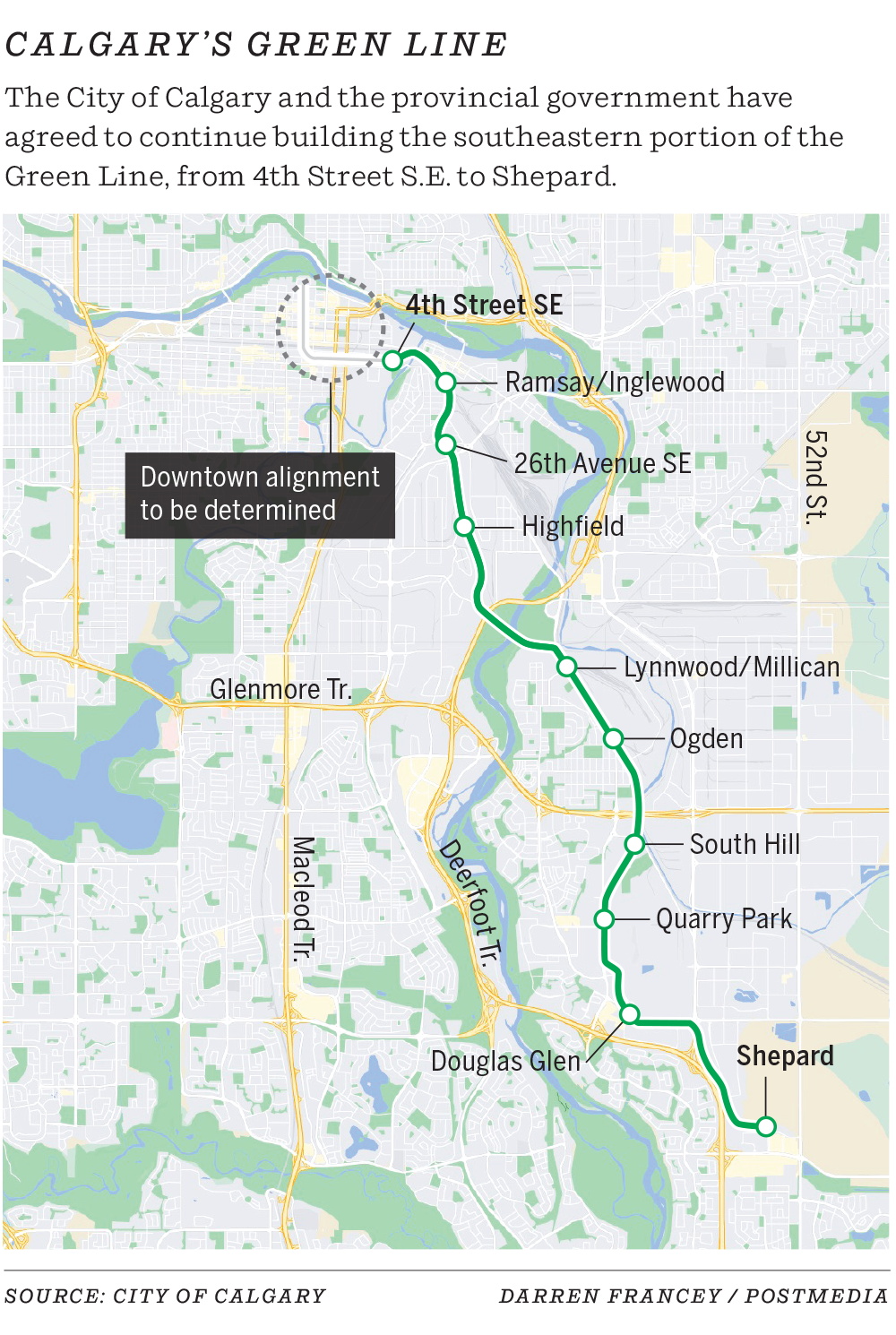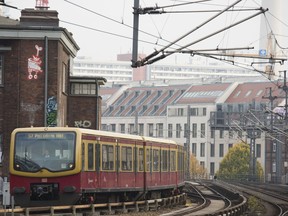Leong: Politicians can’t save face over Green Line fiasco

[ad_1]
When transformation Calgary rail project is all said and done, it won’t be possible for any politician to come out look good

Article content
It’s been a long time since we’ve been treated to such an unfettered view of politicians trying to save face.
Advertisement 2
Article content
The reason: Calgary’s beleaguered Green Line LRT project.
The players: Pretty much everyone.
When the province decided with no warning in September it was going to walk away from the project because it suddenly expressed a formal objection to spending money on a tunnel through downtown, it should not have been surprised that the result would be the project’s shelving.
Recall that at the end of July, Calgary city council decided to shrink the Green Line for the umpteeneth time due to cost pressures, paring back the end of the line in southeast Calgary from Shepard to Lynnwood/Millican.
At the time, the province had no real public reservations about what was going on. But suddenly in September, the Government of Alberta decided it had reservations after all.
Article content
Advertisement 3
Article content
The province surely must have known its sudden withdrawal from the project, including the loss of its $1.5-billion contribution, would be extremely disruptive given the advanced state of all the work that had already taken place.
As if that wasn’t enough, we learned last week the province’s money was back on the table again, available to fund the portion of the Green Line from 4th Street S.E. in Victoria Park to Shepard.

While the province seemed to hail this as some kind of victory, it really isn’t.
All last week’s announcement shows is that we could have got to this place without all the tumult and turmoil we’ve been subjected to since the beginning of September.
The newly revived portion of the Green Line is the least problematic and least expensive portion of the project.
Advertisement 4
Article content
The people who were in charge of the Green Line knew this already and as you might recall, the project was split into chunks precisely because of the perceived and real financial risks with the various options for getting the route through downtown. Only more recently was the project sewn back together, ironically in an attempt to obtain cost certainty.
They built off-ramps into the project — which the province didn’t use at the time, as we know.
But now here we are well past those off-ramps but still very much off this metaphorical highway, trying to find a way out of the ditch we driven into and get back on the road.
Meanwhile, some voices at the city level continue to discount the possibility of building some kind of elevated track through the city centre before the issue has been properly studied.
Advertisement 5
Article content
Previous objections were mainly related to esthetics and convenience.
Esthetics because some cities have had bad experiences with elevated trains due to poor design choices.
But when built properly, they work.

The main access to Montreal’s Central Station in the heart of downtown is a decades-old viaduct. The parts underneath were smartly repurposed as railway workshops and commercial/office spaces.
Although Manhattan rid itself of active elevated rail lines, some dense areas on the east side of the East River retain their above-ground sections. Stations are part of the neighbourhood and they work. (I would know: I’ve used them.)
Chicago seems to function just fine with its heritage elevated metro system, which is woven into the city’s fabric and lore.
Advertisement 6
Article content
Meanwhile, large chunks of Berlin’s urban metro and suburban rail use a mix of underground and above-ground services.
As for convenience, the idea of shutting down Plus 15s and rebuilding them is apparently unacceptable, forgetting the fact parts of the walkway network have occasionally closed for months at a time for reconstruction and refurbishment.
Dismissing elevated rail out of hand is counterproductive, and I’m not certain this alternative ever got a fair hearing.
To not entertain an elevated option for the Green Line given the current circumstances is tantamount to obstruction.
Whatever happens now, we are well beyond the place where politicians can gloat about the Green Line if and when it ever gets completed. They were the ones who ruined it in the first place, so getting things back on track will hardly be deserving of praise.
Elected officials simply need to put their heads down and work. It’s too late to save face.
Recommended from Editorial
-

How the Green Line went from foundational project to multibillion-dollar bust
-

Questions still swirl around Green Line’s future
-

Nenshi tees off on UCP over Green Line saga
Article content







